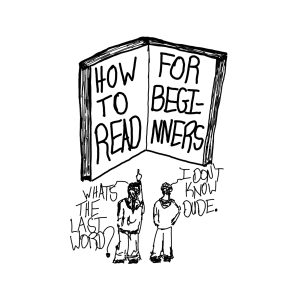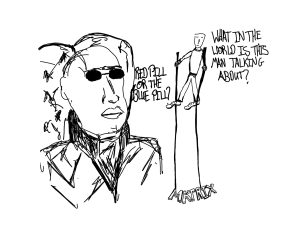4.2 Good Business Writing
[Author removed at request of original publisher]; Linda Macdonald; and Matt Daigle
Learning Objectives
By the end of this chapter, you should be able to
- Identify six basic qualities that characterize good business writing.
What is “good” business writing? To be effective, employ strategies that make your writing powerful and that align with your purpose, audience, context, and channel. This chapter presents six qualities of good writing and three rhetorical elements to help you develop your strategy.
Six Qualities of Good Writing
Edward P. Bailey offers several key points to remember: Good business writing follows the rules, is easy to read, and attracts the reader’s attention. In addition, good writing meets the reader’s expectations, is clear and concise, and is efficient and effective.
1. Good Writing Follows the Rules
What are “the rules”? Do “the rules” depend on audience expectations, industry standards, or what your English teacher taught you? Or are they reflected in the writing of authors you see as positive examples? The answer is “all of the above.” You may need to balance audience expectations with industry standards for a document. When searching for balance, reader understanding is the deciding factor.
When we say that good writing follows the rules, we don’t mean that a writer cannot be creative. Just as an art student needs to know how to draw a scene in correct perspective before they can “break the rules” by “bending” perspective, so too does a writer need to know the rules of language. An understanding of how to use words correctly and form sentences with proper grammar enables you to strategically break the rules where appropriate. As Pablo Picasso said, “Learn the rules like a pro, so you can break them like an artist.”
2. Good Writing is Easily Read
Writing that is easily read is writing that adjusts to audience’s needs and desires within a particular context. What is easy to read? For a young audience, you may want to use straightforward, simple terms and incorporate references and language that they can relate to; however, an example referring to Billie Eilish may work with one reading audience and fail to connect with another. Good writing uses language appropriate for your profiled audience.
Profession-specific terms can serve a valuable purpose when we write about precise concepts, but not everyone will understand all the terms in a profession. If your audience is largely literate in the terms of the field, using industry terms will help you establish a relationship with your readers. If you are writing a report for a financial analyst on the stock performance of companies in the consumer cyclical industry, you would not need to define “consumer cyclical”, but if you are writing for a client, you may need to explain that the category includes companies that are subject to economic fluctuations, for example, companies in the real estate, retail, housing, and automobile markets.
The truly excellent writer is one who can explain complex ideas in a way that the reader can understand. Sometimes ease of reading can come from the writer’s choice of a brilliant illustrative example to get a point across. In other situations, it can be the writer’s incorporation of definitions into the text so that the meaning of unfamiliar words is clear. It may also be a matter of choosing dynamic, specific verbs that make it clear what is happening and who is carrying out the action.
3. Good Writing Attracts the Reader’s Attention
 Bailey’s third point concerns attracting the reader’s attention. Will they want to read it? This question should guide much of what you write. Because audiences increasingly obtain information through visual, auditory, and multimedia channels, appealing to audiences through these channels may be desirable.
Bailey’s third point concerns attracting the reader’s attention. Will they want to read it? This question should guide much of what you write. Because audiences increasingly obtain information through visual, auditory, and multimedia channels, appealing to audiences through these channels may be desirable.
Perhaps the most universally useful strategy in capturing your reader’s attention is to state how your writing can meet the reader’s needs. If your document provides information to answer a question, solve a problem, or explain how to increase profits or cut costs, you may want to state this in the beginning. By appealing to audience needs and benefits, you give your audience a reason to be interested in what you’ve written.
4. Good Writing Meets the Reader’s Expectations
Good writing meets the audience’s needs. To meet the reader’s expectations, the writer needs to understand who the intended reader is. In some business situations, you are writing just to one person: your boss, a coworker in another department, or an individual customer or vendor. If you know the person well, it may be as easy for you to write to them as it is to write a note to your parent or roommate. If you don’t know the person, you can at least make some reasonable assumptions about their expectations based on the position they hold and its relation to your job.
In other situations, you may be writing a document to be read by a group or team, an entire department, or even a large number of total strangers. How can you anticipate their expectations and tailor your writing accordingly? Naturally you want to learn as much as you can about your potential audience. How much you can learn and what kinds of information will vary with the situation. If you are writing Web site content, for example, you may never meet the people who will visit the site, but you can predict why they would be drawn to the site and what they would expect to read there. In addition, a clear understanding of the writing assignment and its purpose will help you to meet reader expectations.
5. Good Writing is Clear and Concise
 Clear and concise writing reflects the increasing tendency in business to eliminate error and misunderstanding. Errors can include miscalculating reader response and vague or confusing writing. Your goal in creating clear and concise writing includes communicating all the intended information with a minimum of signal or message breakdown or misinterpretation. Designing your documents and presentations to reduce message breakdown is an important part of effective business communication.
Clear and concise writing reflects the increasing tendency in business to eliminate error and misunderstanding. Errors can include miscalculating reader response and vague or confusing writing. Your goal in creating clear and concise writing includes communicating all the intended information with a minimum of signal or message breakdown or misinterpretation. Designing your documents and presentations to reduce message breakdown is an important part of effective business communication.
6. Good Writing is Efficient and Effective
Finally, good writing is efficient and effective. There are only twenty-four hours in a day and we are increasingly asked to do more with less– with shorter deadlines almost guaranteed. As a writer, how do you meet ever-increasing demands? Each writing assignment requires a clear understanding of the goals and desired results, and when either of these two aspects is unclear, the efficiency of your writing can be compromised. Rewrites require time that you may not have, but the corrections will be necessary for efficiency and effectiveness.
Your written products will be required on a schedule that impacts your coworkers and business. Your ability to produce effective documents efficiently is a skill set that will contribute to your success.
The emphasis is on effectiveness. What is effective writing? It is writing that succeeds in accomplishing its purpose. Understanding the purpose, goals, and desired results of your writing assignment will help you achieve this success. Your employer may want an introductory sales letter to achieve the goal of increased sales leads and potential contacts. Your audience may not see the document from that perspective but will instead read with the goal “How does this help me solve X problem?” If you meet both goals, your writing is approaching effectiveness. Here, effectiveness is qualified with the word “approaching” to point out that writing is both a process and a product, and your writing will continually require effort and attention to revision and improvement.

Rhetorical Elements and Cognate Strategies
Another way to define good writing is to apply the goals of Aristotle’s three elements of logos (logic), ethos (ethics and credibility), and pathos (emotional appeal). These elements (as discussed in Chapter 2.1) are essential in classical rhetoric, defined as the art of presenting an argument. Good writing appeals to all three elements of logos, ethos, and pathos to varying extents given the purpose, audience, and context.
Ensuring that our writing applies “cognate strategies”, or the ways of understanding discussed in Chapter 2.4, can also help us achieve the goals of good writing. Like rhetorical elements, cognate strategies can be applied to public speaking but are also useful in writing. The strategies of clarity, conciseness, arrangement (logos), credibility, expectation, reference (ethos), and tone, emphasis, and engagement (pathos) together create good writing. The degree to which the communication meets the goals of Aristotle’s three elements and the cognate strategies determines its effectiveness.
Exercise: The Qualities of Good Writing
1. Read the following email to employees of Toto’s Tax Prep:
Hey folks,
I’ve asked you MANY times to follow the parking lot policy. The poliicy clearly says that you should park only in your assigned spot, not wherever you want. Your spot was selected by a random draw. If you didn’t get the spot you wanted, DEAL WITH IT! Don’t take someone else’s spot. That’s just rude.
Some of you have also started parking over at Dorothy’s Shoe Store, and she’s not happy and has asked me to ask you to stop doing that asap. You should be treating the local businesses in the neighbrhood with more respect
I want you to read the parkng policy attached to this email. You should sign it and return it to your manager. Do it by November 1. No exceptions!!!! If you don’t sign, you will lose your spot. And then good luck finding a place to park in this city! haha
Signed,
Henry
Identify three of the six characteristics of good writing. Briefly explain with example how the message fails to satisfy each characteristic.
2. You are sending a cover letter to potential employers in application for a co-op position. This letter is an important first impression, and you want the letter to demonstrate good writing. Look at the cognate strategies in Chapter 2.4. Select five of the nine strategies and briefly explain how you can apply them in creating a good cover letter.
Check Your Knowledge (15 points)
References
Bailey, E. (2008). Writing and speaking. New York, NY: McGraw-Hill.
Kostelnick, C., & Roberts, D. (1998). Designing visual language: Strategies for professional communicators (p. 14). Needham Heights, MA: Allyn & Bacon.
Images: Original drawings by Matt Daigle
Photo: “Business people giving a thumbs up” by Rawpixel Ltd is licensed under CC BY 2.0

